The Sugarcane and the Stevia plant:
This is a presentation about two plants that both sweeten things up! First, the sugar cane plant and then, the Stevia plant.
What we’ll talk about:
Background information on each plant
Comparison of between the two plants
Comparison includes: pros and cons of each plant, differences in manufacturing, and overall efficiency and use.
Conclusion: what have we learned and the answer to our big question
Sugar Cane
Sugar cane is a type of plant many of you may know. Here are a few “sweet” background facts to refresh your memory.
-Sugar cane is part of the grass family.
-It is found in humid, tropical areas and sub-tropical areas.
-Sugar cane has many uses, some including sugar, ethanol, and bioelectricity.
-It makes up 70% of the world’s sugar source.
-Sugar cane is produced mainly by Brazil, India, China, Mexico, Australia, Thailand, Pakistan and the United States. In the United States, sugar cane is grown in Florida, Hawaii, Louisiana and Texas.
-Up to three quarters of the sugar cane stalk is made up of water.
Description: A tall grass that can range from 3-6 metres. It looks similar to a bamboo stalk.
Stevia
Stevia is a tiny herb, which is incredibly sweet. Some argue that Stevia is about 40 times sweeter than sugar. This is a very valid argument. Here are some interesting facts about Stevia:
– Stevia can replace Sugar and already has in many food products
– Stevia is often referred to as the sweetest plant in the whole world!
– Stevia can be grown on poor soil
– It has NO sugar or No Glucose
– Stevia has many health-benefiting chemical compounds
– Stevia is being grown in Japan, China, Thailand, Paraguay, and Brazil
– It originated in South America, mainly Paraguay
Description: Height – 40-80 cm, Length and Width of leaves – 5 cm long and 2 cm wide, Small white flowers grow on the stem
Pros and Cons
Now we present you the pros and cons of both plants.
Pros and Cons of Sugar Cane
Cons:
Sugar cane and sugar both have many calories
Too many calories from sugar (about 100 or more per day) can cause tooth decay, obesity, and high cholesterol
Sugar cane can only be grown in subtropical and tropical areas
Overdoses can also cause users have a “high” and then later, a sugar crash.
Pros:
Natural sweetener
Has many uses consisting of ethanol, sugar, bioelectricity, and bioplastics
Ethanol made by sugar cane may used as alternative for other fuels
Biomass from the plant can be burned for electricity
Can be grown in many tropical and subtropical areas of the world
Grind able into a sweet drink
Pros and Cons of Stevia
Pros:
Non-toxic plant
– Completely Natural
– Used frequently without negative effects
– The Sweetener of Stevia (Stevioside) has no calories
– Blood Sugar levels are stable
– Calorie free, Carbs Free, Glycemic Index Load Free, Especially High Glucose Free
– Can be used in baking
– won’t cause tooth decay
Cons:
-Over Consumption has been linked to lowered blood pressure and blood glucose in people
– Most Commercial stevia are also mixed with artificial sweeteners [ tips always read ingredients list]
– Bitter aftertaste
Comparing the Two
Differences:
Similarities:
– They can both be used as sweeteners
– Both plants can only be grown in tropical parts of the world.
-Both are natural sweeteners
– Stevia does not contain sugar whereas sugar cane does
– Stevia is sugar cane substitute.
-The two plants belong to different families
-Stevia, can be 30 x sweeter than sugarcane and 300x sweeter, if refined
CONCLUSION
During this project, we wanted to know the difference between the stevia plant and the sugar cane plant. Our role now, was to research and find information about the two plants. We found background info, pros and cons, and also compared the two. As a result we conclude with the following:
-Stevia is a substitute sweetener for sugar cane
-Sugar cane contains calories and used as sugar whereas stevia does not do or have either.
-Stevia, overall seems much healthier, but is still not completely confirmed safe
Both plants are very different and have only few similarities. Stevia, a one and only healthier alternative for sweetening the foods without any calorie threatening, Thus, sugar cane is the better choice as long as one can control the amount consumed daily. We hope you learned something new from our presentation!
Bibliography
The websites we used are:
– http://sugarcane.org/sugarcane-products
– http://www.nutrition-and-you.com/stevia-plant.html
– http://sweetnhealth.blogspot.ca/2010/04/background-of-stevia.html
– http://www.sugarindustrybiotechcouncil.org/sugar-beet-faq
– http://www.herbsarespecial.com.au/free-herb-information/stevia.html
– http://www.livestrong.com/article/35750-pros-cons-stevia/
– http://goodfoodeating.com/3511/pros-and-cons-of-stevia/
– http://healthresearchfunding.org/pros-cons-stevia/
– http://www.uofmhealth.org/health-library/hn-2169001#hn-2169001-interactions
– http://news.cornell.edu/stories/2015/11/cornell-scientists-reduce-sweetener-stevias-bitter-bits
-http://archive.fortune.com/galleries/2008/fortune/0804/gallery.green_biofuels.fortune/3.html
-http://www.kew.org/science-conservation/plants-fungi/saccharum-officinarum-sugar-cane
-http://www.livestrong.com/article/242637-side-effects-of-a-sugar-overdose/
-http://www.livestrong.com/article/468892-stevia-vs-sugar/
-http://healthyeating.sfgate.com/sugar-vs-stevia-7658.html
